The episode discusses using outfit photos to identify and define your personal style through the four main pillars: clothing lines, clothing shapes, clothing color, and clothing details. It emphasizes the importance of analyzing personal style data and self-trust in the style development process.
Listen to it:
Transcript:
The style data is your friend, don’t just let all those outfit photos go to waste! USE THEM to create outfits you know you’ll love.
Hi, I’m Gabrielle Arruda your host for the Style POV podcast and I’m here to help you learn to trust your fashion instincts, hone your authentic style pov, and find strength through style.
Understanding the Four Pillars of Outfits
The four pillars of outfits, and how to use them.
Think of your outfits like a chair. It has four legs, they need to be the same height, balanced, and strong enough to support whoever sits in it.
We don’t want a chair with uneven legs, you’ll tip over. We don’t want a tiny chair that you can’t sit in comfortably or fails to hold us up.
We want a chair that we can sit in, comfortably.
Building an outfit is a lot like building a chair. It has to have four main legs or pillars to hold up and keep you comfortable and happy.
Those pillars or legs are clothing lines, clothing shapes, clothing colors, and clothing details.
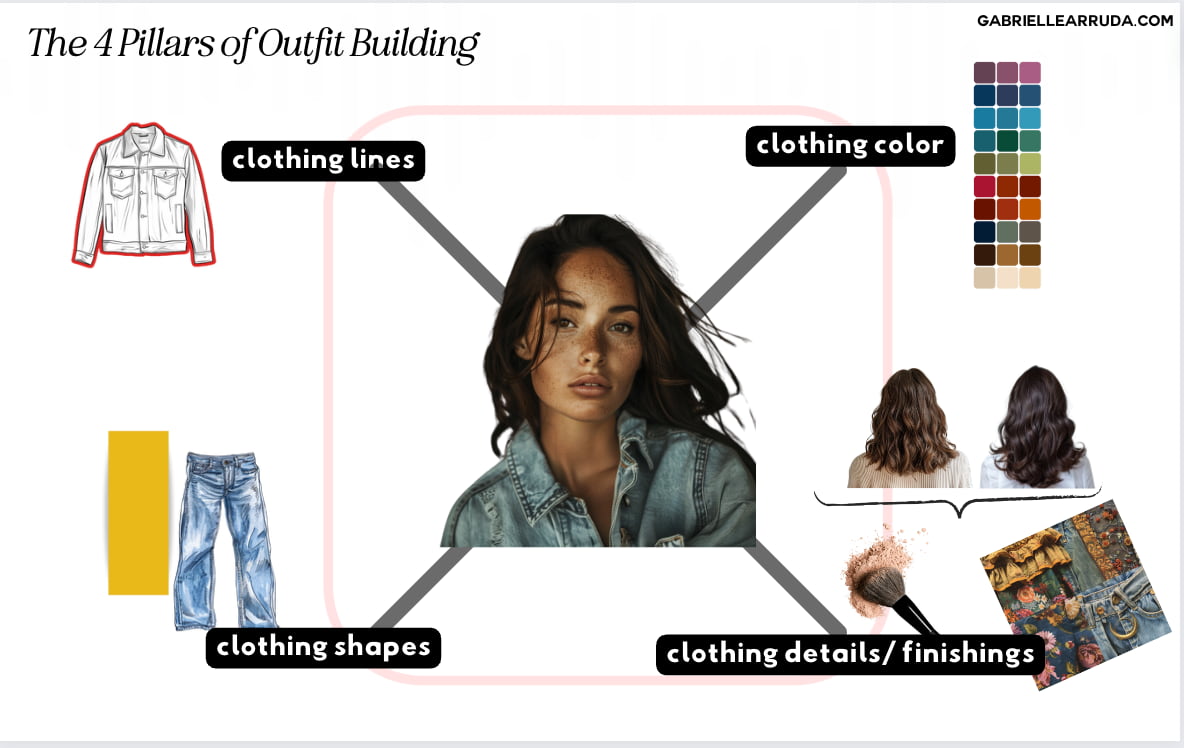
We want to find the right chair for you, it may be a tufted Victorian armchair or a rustic farmhouse table chair.
The aesthetic value and expression of the chair come through balancing out these legs.
Now different style systems may help you in these areas, or confuse you. It’s not about making broad generalizations that your style lines chair will be the kibbe system. And your details pillar will be your Kitchener essence.
Because your mileage may vary with each system. This is why it’s incredibly important to not be tied to “one system gives you all your answers” but rather a take what works and leave the rest approach
If a lot is working, great! If you only got one nugget of info, still great!
Analyzing Your Style Data with Daily Outfit Photos
But here we are backing off the nomenclatures and being a bit more analytical. We’re using our own style data- ie our daily outfit photos– and we are separating them into winners, meh, and “losers”. We take a couple of winners, and we take a couple of losers. Again- you get to decide this, you get to pinpoint what you like and don’t like. And you aren’t even thinking about the pillars yet.
Just scroll through that daily outfit photo album and quickly say yes, eh, or no.
Then we want to start looking at what each of the photos have in common. You may not get all 4 pillars in one data set. But ideally, we are starting to look at let’s say 5-10 images in each category.
We just want a decent sample size, and if our recent outfits aren’t doing it, we really can pull from the past year. I wouldn’t go too far back though, because we are making decisions for your style now, not 15 years ago.
I want you to listen to the rest of this podcast, but also keep it in the back of your head, I also have a quick video on my style pillars including how I got that data, and some of the new input.
Now, there are some broad objectives with each pillar or leg, and then over time, we want to refine and get more nuanced. But in the beginning, try to think big picture.
And it’s ok if when you start you have some uneven legs or even missing legs. It’s a slower process.
So what is our first leg- now this is in no particular order, they all have the same weighted value at the end of this.
Pillar 1: Style Lines
Let’s discuss style lines first. This isn’t confined to Kibbe. In fact, the concept of style lines has been around forever. They are the outer lines of your clothing. They do not include anything internal within the garments.
If you’re into kibbe the goal, in my opinion, is finding those style lines that match or harmonize with your body.

But in the general sense- what are the lines doing? Are they sharp and holding their structure, are they exaggerated and big, are they soft and fluid, are they restrained and curved? You may opt to use your Kibbe ID as a reference for this. But a lot of value can come when you look at your own clothes. We are getting a bit nit-picky here. If you laid those pieces on the floor and you looked at the other lines of the garment would you see a crisp line, or would it be soft line. Imagine if you were to draw the shape of the garment, what types of lines would your pencil be making? We are just getting a sense of what your garments typically have. And if you’re like well, I have a bit of everything, that’s ok.. We will hone it down over time and at some point consider specific lines within specific categories.
But here we are just trying to see- what are we working with?
We want to consider evaluating the line type like – straight-refined- curve. Line direction -vertical- horizontal- diagonal. And how the lines form- are they decorative or part of the base structure. Like a straight cut shirt with a ruffled collar.
If this is getting too technical, just start with some basic observations.
And remember this leg is ONLY about the outside lines of your outfit or individual clothing piece. It does not consider anything “inside” the garment. We will get into that shortly.
One thing to note is if all the outfits you’re evaluating from are “one” piece- like all dresses. It may be trickier to get a true view. While I don’t want you pulling meh outfits into your yes pile. It might be good to notice this and take note- what would these lines do in my casual styles or pants styles etc?
So for my style, the lines of my outfit are longer visually, they tend to have some soft curved shapes and widen or emphasize the upper shoulder line. They tend to be straight or angle out after my hips end. And if the neckline closes tightly, the shoulder seams extend to a broader line.
Remember this is general, we are talking about broad themes. Sometimes you will tweak a style line for a specific outfit, but the goal is to get broad strokes and define your own style toolbox.
Second Pillar: Style Shapes
Next up we have style shapes. We can have all different types of lines or silhouettes but let’s look at what shapes they are creating both along the outline of the outfit, and the inside of the outfit.

We can have tubular lines another name for rectangular or straight all the way through. We can have large or Small triangles or combos of these. We can inverted shapes, like a t-shape. Bell shapes, full rounded circles, etc.
Like a Big circle skirt would be fully rounded circles. If we consider my style I prefer tubular straight shapes. And some hourglass shapes. Please note this does not mean I’m calling myself an hourglass in the traditional body typing system. It means that if we look at what shapes are being created by my outfit we have some volume or horizontal lines at the shoulder, the lines nip in at the waist, and then go out at my hips, putting all those lines together, you create an hourglass shape.
And if you’re having trouble visualizing this, I have some examples in the show notes article to help.
We aren’t just looking at the shapes of the whole garments but what internal shapes are we seeing. Things like pockets, yokes, plackets, cuffs, sleeves, or things that create points of interest within that silhouette.
Do we have closely spaced shapes within the garment like patch pockets with button-fly on jeans? Or widely spaced Shapes like a large open floral print.
We don’t need ALL the answers, we just need to start making some observations from our data to keep pushing us forward.
We may earn a commission from you clicking a link below. And as an amazon associate, we earn on qualifying purchases. Full affiliate policy, here.
If you’re confused about lines vs. shapes check out this quick video breakdown:
Third Pillar: Color and Your Style
Ok, next up we have color.
I just finished my sci-art training and boy was it an illuminating experience. It really showed me while knowing color theory, and knowing palettes, applying it to the human face is nuanced and I made some wrong choices previously.
But we will do a video to get into all of that.
But color impacts our outfits, duh. They are one of our legs. You take the same outfit in dusty mauve, and bright coral, not only will they communicate different things.. But if you know your season, they match the colors in your face and help hold up your face. Instead of a floating head effect.
If you’re not into seasonal color analysis, or you’re still trying to figure out your season. You can still look at your daily outfit photos and see how am I using color, what colors do I gravitate towards, and how do I like the energy of my outfits to appear. Is there a technique of color that I prefer- like gradation, color blocks, or monochrome?
Now that I’ve had the training and analysis, I tend to lean towards knowing your seasonal color creates one less variable here to worry about. You know you have a leg on your chair. Determining how you might use that color can be your focus, or what parts of your palette feel in line with your style goals can be prioritized.
We want these to be four separate legs of our style because we to explore them separately and then combine and test them together.
If we jump into how does it all work together, we have trouble determining a standard to compare it to and we can throw the baby out with the bathwater.
In my own experience, I did this! I tried bright warm colors in shorter perkier, gamine styles and said – it all doesn’t work. Or used a couple of bad photos as a determining decision.
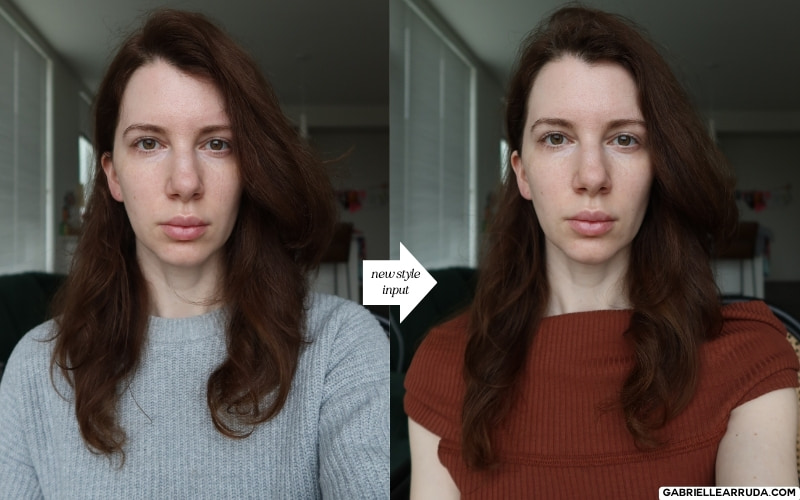
And EVERYONE said I was summer, so I thought ok, that could track. But after analysis, I’m a bright spring.
If you’re shocked, we will discuss it in a future video on YouTube. But after that analysis, I have no doubts.
Color was always my weak leg. And I kept exploring and exploring the summers, with no real “aha” moments. So i thought maybe I just have a stool instead of a chair.
But nope. This brings me to a quick disclaimer- crowdsourcing is not always the best way. And if things aren’t clicking, it may take some self-reflection and abandoning your initial preconceived notions.
Anyway, if you’re starting with a stool, don’t worry! The building can take time.
Ok, so we are looking at outfits and trying to see- do I like gradients, do I like color blocking, do I lean on neutrals…. And also considering- where do I want this to go? Would I like to shift more towards “this” instead of that…
The style data is your friend, don’t just let all those outfit photos go to waste! USE THEM to create outfits you know you’ll love.
Fourth Pillar: Details and Finishing
And finally, we have the detailing or finishes. This leg can actually be a bit more expansive, and it can be helpful to build this leg slowly. And you might find in this section you have a bit more back and forth in the development phase.
The details are really important and can take a while to “see” correctly. They are there to help you balance out your other legs, but also help you “nail” the aesthetic you desire.
It includes scale, textures, accessories, makeup, and hair. Obviously, this is a spectrum. You may have a go-to hairstyle for every day but go a bit more glam when you dress up. But we want them all to feel connected and like they belong to the same person.
Scale is the relationship between all your style details and how they relate to your body and other elements. Do you like large-scale prints, with big jewelry? Or maybe you like tighter-sharper patterns on your long style lines.

This can also include textures. Because a blue dress in satin is saying something different than a blue dress in linen. Could they both be part of your details pillar, yes! But we want to get an idea of the range we prefer. Some people will be more narrow, i like natural fibers, cotton, linens, and wool only. Others will prefer larger spectrums, but can still determine the similarities across their spectrum. And if it’s very broad, that’s ok, we just want to see where we are at.
Then we can include what types of accessories we like, what is their aesthetic, common threads, shapes, lines, etc. Some people want a structured bag but like their clothing lines to be fluid. That’s all ok!
Remember we are all building our own chairs. And you may find someone else chair ugly, but that’s ok- you aren’t sitting in it!
When reviewing your outfits, sometimes it’s hard to see all the yes’s.. especially if we are in the Messy middle.
So that’s why we also made a “loser” outfit list. These aren’t necessarily ugly outfits, they just don’t contain the materials for your best chair.
So if you’re struggling with this. Do the same exercise with each of our four legs, and add some no’s to your lists.
Revising and Refining Your Style Pillars
And I have a simple worksheet linked in the show notes where you can start adding your answers. But it’s also just fine if you write it on a blank sheet of paper.
But, just because you add it as “no” now, this can change given more style input. For instance, color was my weakness… I added “ no bright warm colors”. Ha, I know, I know…
So, now, I’m rebuilding that leg, with a stronger foundation. The other legs aren’t really changing much. This is why it’s great to think of it this way, they are all helping support the best YOU. But it’s ok to rebuild, adjust, or tweak.
And with more outfit data and more new style input, you get more answers and refine your pillars or legs.
And if you’re like, I have no legs, no style data, what do I do? You start. I talk a lot about forward motion.
We want to keep our style trajectory going. If you’re sitting there mulling over what is “perfect” you’ll just be more confused. Let’s keep building, so we can see the design of our chair, instead of just staring at our raw materials and wondering what might it be.
And if you’re wondering, but Gaby- I know you purged a lot of warm/brights from your wardrobe what now? Do I regret that? NO!
I gained some much style data and confirmation of my other legs- that I have a stronger foundation. And this will just allow my stool to look like a chair now.
And when you get new style input you like, like color analysis or finding a neckline you love. The tendency can be to go on a shopping trip. But shopping needs to be intentional, and when you expand or overstuff your closet we get the paradox of choice. (book source)
We think we want 26 jam selections, but we feel less satisfied when we pick from 26, than we do when we pick from 4 jams.
So more, and more, isn’t letting you see your clothing inventory. So if you’re like where do I even start, start with a closet audit, and start eliminating some easy no’s. And start taking those daily outfit photos.
Now, if you have an anomaly with your data- what do you do? You’re like all my favorite outfits have straight, short lines, with bright colors, but i have this one cute dress that is longer and softer. Don’t try to make sense of everything right away. Instead, place that in a “to be explored” category.
We need further testing for that.
The more you nail down some of the broader strokes of each of these pillars, the easier you will be able to see the slight changes that can evolve from 50% there outfit to 85% to “Oh gosh, this is it!”
Building Confidence and Trust in Your Style Choices
And, while you’re doing this you might inevitably think of style systems and whether or not they are “lining up” or being reflected in this. But I really encourage you to write these answers in your own words and look at your actual style data.
Because we want YOU to see what YOU like. Style is a lot of style-identity work. And we are here to trust our own fashion instincts and strengthen that trust muscle.
So that when 50 ppl start telling me, I can’t be a bright spring. That one sweater looked horrid on me, or that True Summer is a better fit because…
I’m not going to be flustered. I’m going to trust my process, my data, and the strong foundation of verified color analysis training with an expert in their field.
Which is my last point. Ask someone a broad question and you might get 15 well-argued commenters who tell you “ YOU’RE THIS!!”. { what to do when you feel like an imposter in your style}
And it shapes your interpretation of your chair. Be open to constructive feedback if you need it, but always explore what you are drawn to. And when a professional might be able to help.
{join the free facebook group for a positive fashion community, here!}

Ultimately we want the freedom to build our own chairs to our exact specifications. But, there’s nothing wrong with asking questions and being open to new possibilities.
I hope this helps you set up a framework to understand your style a bit better, how to use those daily outfit photos, and how to start trusting your own instincts.
And remember, check out my video if you want to see how I use this; link in show notes.
Until next time.
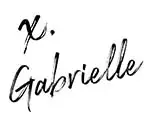
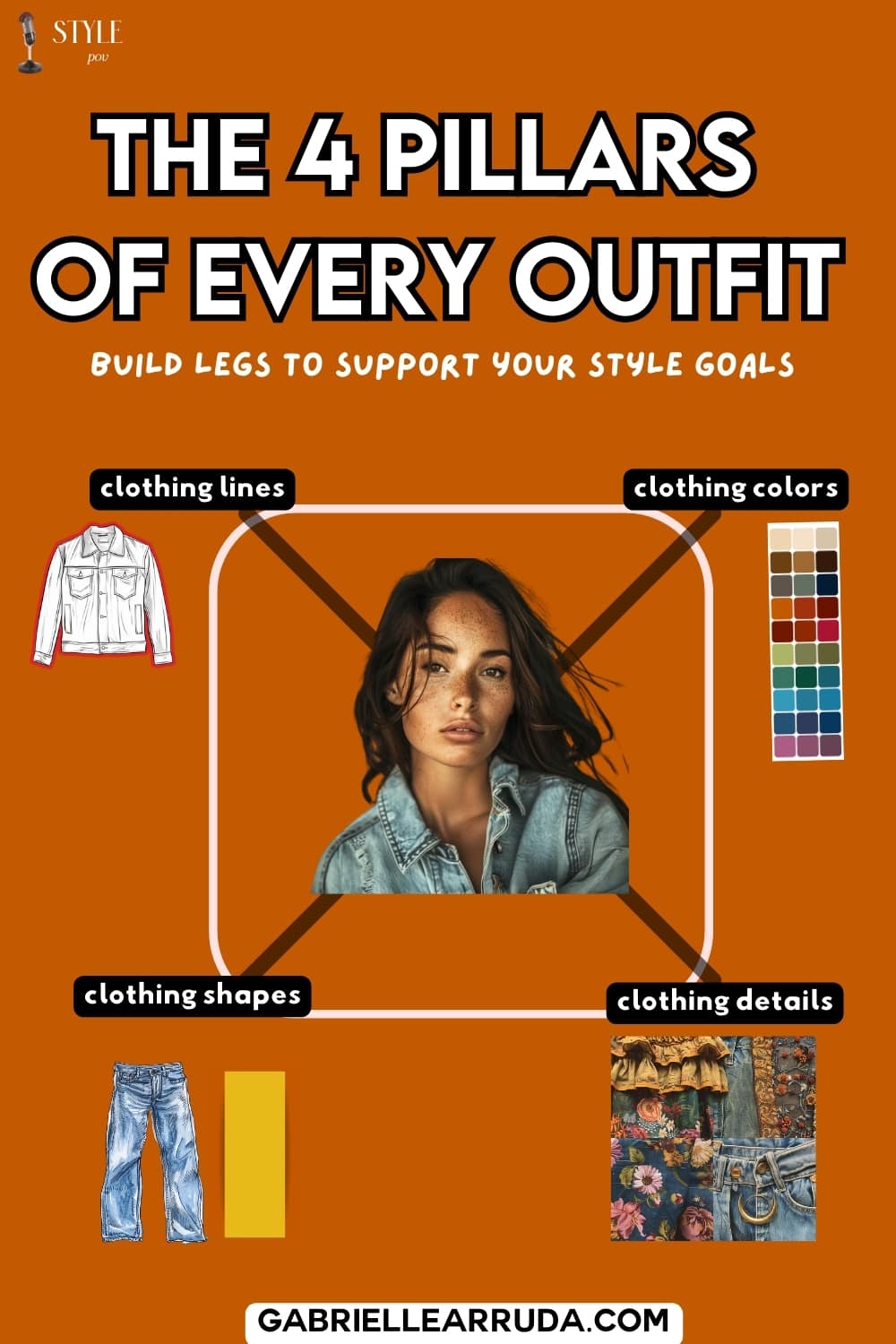

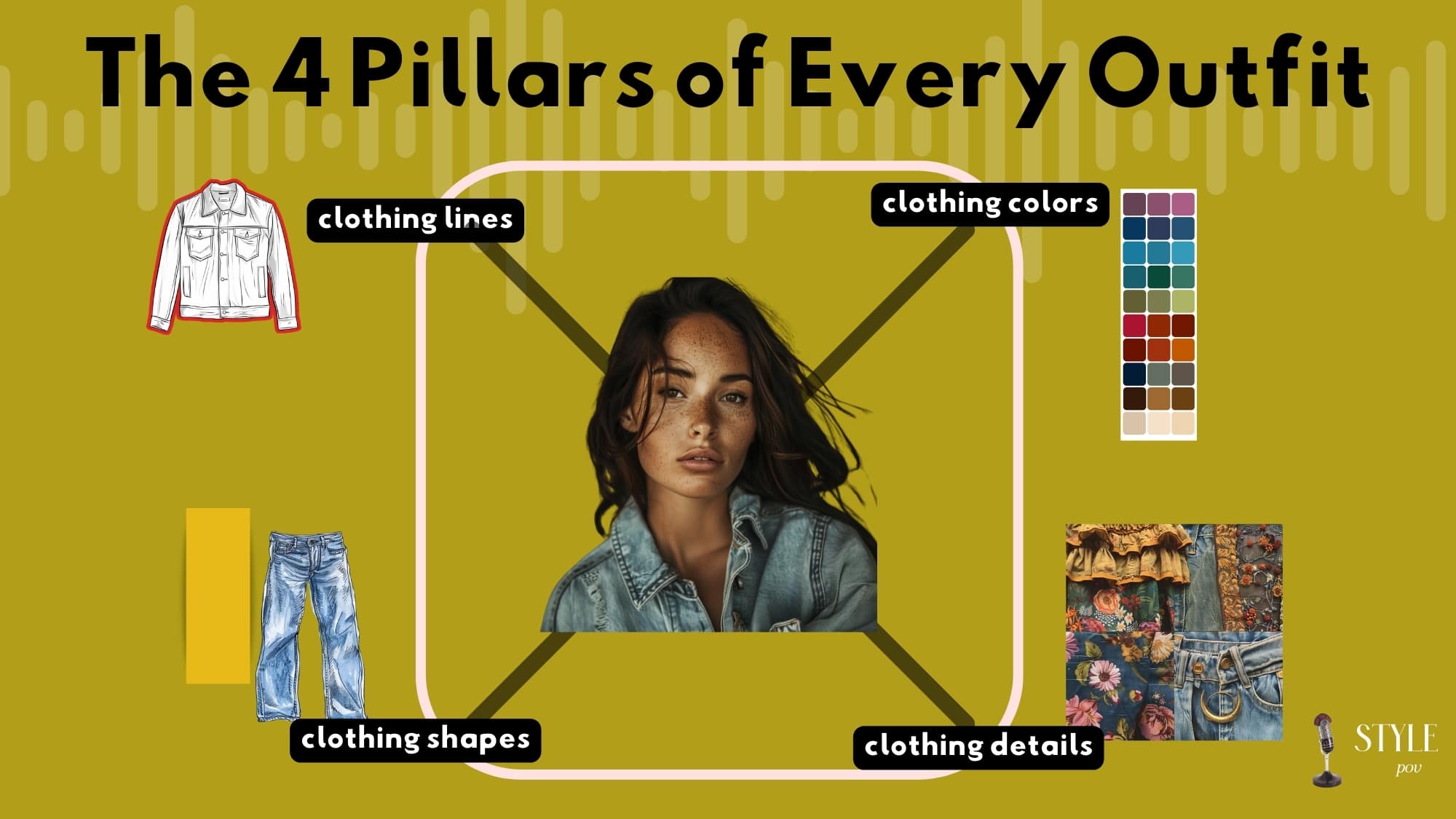
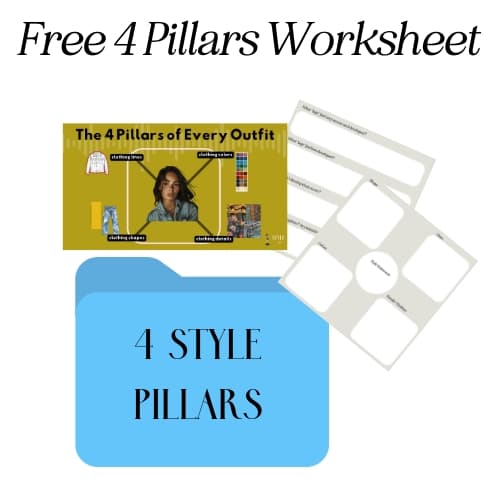
Ann
Thursday 9th of May 2024
I’m still confused about clothing shapes. Love some more images to help explain it.
Gabrielle Arruda
Thursday 9th of May 2024
I made and added a quick video to help explain this! Hope it helps
Gabrielle Arruda
Thursday 9th of May 2024
I will add more examples and videos soon! So with lines we are not thinking about where the lines meet, we are just thinking what type of marker or pencil drew this (medium weight, fine weight, heavy etc) and what type of movement was made to create the line. Was it a sharp straight line or a soft flouncy perky line? For shapes we are focusing on where the lines meet. If you have a boxy crop top and straight leg jeans then your shapes could either be rectangular or square. The actual names don't matter so much, it's more about finding the patterns with your own designs. There are so great examples of ppl using this in my facebook group. Someone had heart shaped and christmas tree as their shapes which was a perfect visual. The names of hte shapes are less important than the patterns we are seeing. I plan to do more videos on this and I actually have one out on how I used this concept to decide between buying a piece or not here: https://www.youtube.com/watch?v=_9aV7bq9-pQ&t=105s And the facebook group is here if you want to see it: https://www.facebook.com/groups/gabriellearruda Hope this helps!
Lauren
Thursday 2nd of May 2024
Gabrielle- thank you for your thoughtful and insightful style advice! The “outfit of the day” pictures and analysis is very unique, and it’s very helpful! Another tip I gathered from your wise suggestion of the daily photos is this: since I have a record of each time I wore each particular clothing item and accessory, I use this data to compute the cost-per-wear for each item! Many readers may discover as I did that the name-brand jeans I paid a high price for will prove to be a wise cost-per-wear purchase! Keep up the great work! Your readers are grateful.
Gabrielle Arruda
Thursday 2nd of May 2024
I totally think this is a great idea! Thank you for sharing it! I found that to be exactly the case, my "splurge" cost jeans are the ones I get the absolute most wear out of.
Kathryn
Thursday 2nd of May 2024
Bright Spring! What a shocker! But, you know, the same thing happened to me. For a long time I thought I was some kind of a Spring and to my shock I turned out to be a Soft Summer (fooled by some warmth in my hair). And then I was virtually analyzed, and it turns out I am a lighter Soft Summer nuanced a little in the direction of Light Summer, but nowhere near falling into the actual category. So in all the Soft Summer colors, including Sci-Art, I look awful in the brightest pinks/corals, but perfect in the lighter roses and dusty pinks. I started paying more attention to the effects I want my colors to have and the harmonies of light/dark value, as well as the need to wear tones in gradients, monochromes and some analogous schemes. That was a complete game changer.
Gabrielle Arruda
Thursday 2nd of May 2024
yes, I think it can be really hard to look at ourselves objectively with some many variables to consider in seasonal color analysis. That's funny that you had the opposite seasonal flip! So glad it made sense when you started paying attention to all those elements. It is a total game changer
Anna
Thursday 2nd of May 2024
Congratulations on honing your season! That's very exciting. I'm looking forward to all your new color content <3
Gabrielle Arruda
Thursday 2nd of May 2024
Yes! Becoming an analyst has given me such a new perspective, I'm excited to add some content around it and eventually in person color services!